Truth be told, many classes will have a few reluctant writers. Just getting them motivated to produce work on the page can be a feat…but teachers are up for the challenge!
Many of my students, including the not-so-enthusiastic writers, have been really into baseball and sports in general. So I thought that teaching the writing process using that theme could be a motivating way to get them more excited about writing, and (praise the baseball gods)…it WORKED!
The Game Plan
Start out by explicitly explaining and modeling each stage of the writing process: pre-writing, rough draft, self editing/revising, editing/revising with help from an adult, and publishing. You can best capture the kids’ interest by getting into character and acting like a baseball coach as you explain (bonus points if you dress like one and wear a whistle). As you go into detail about each step, show them each corresponding baseball visual:
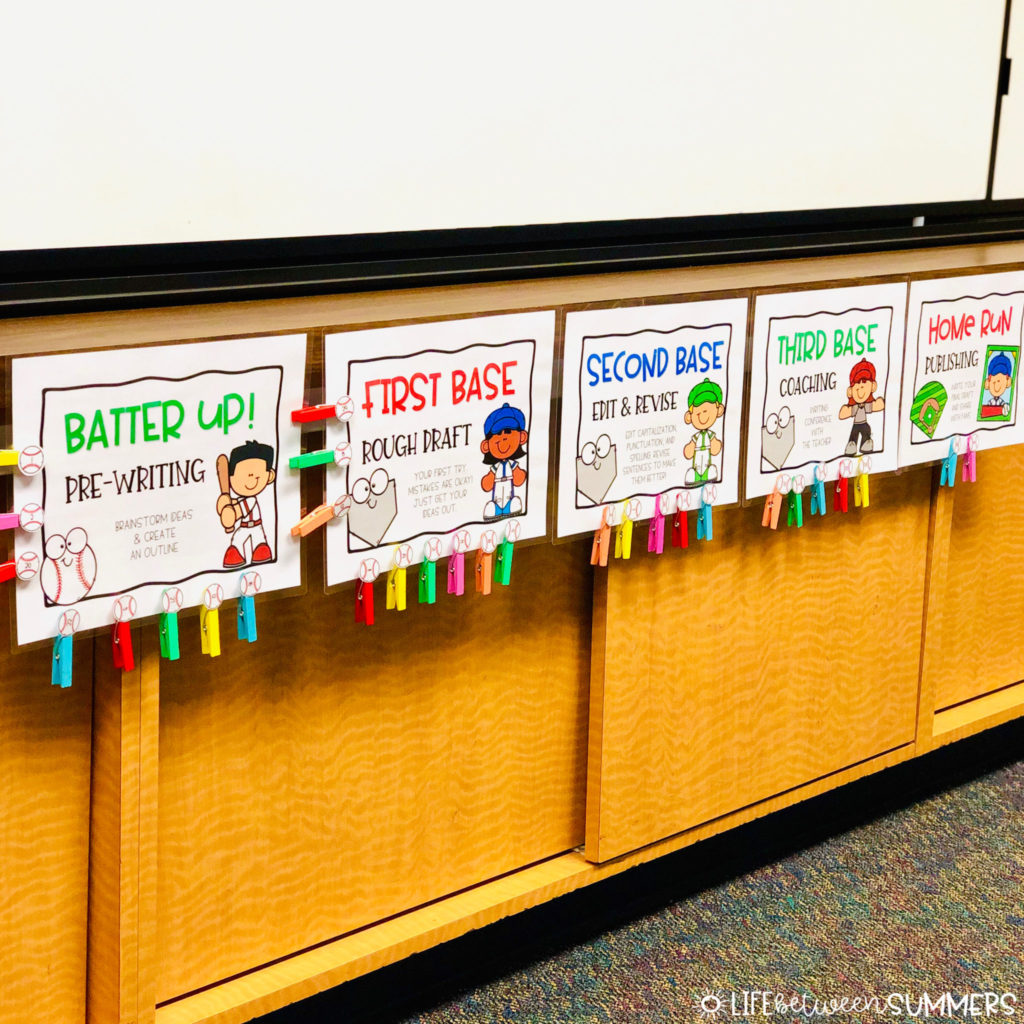
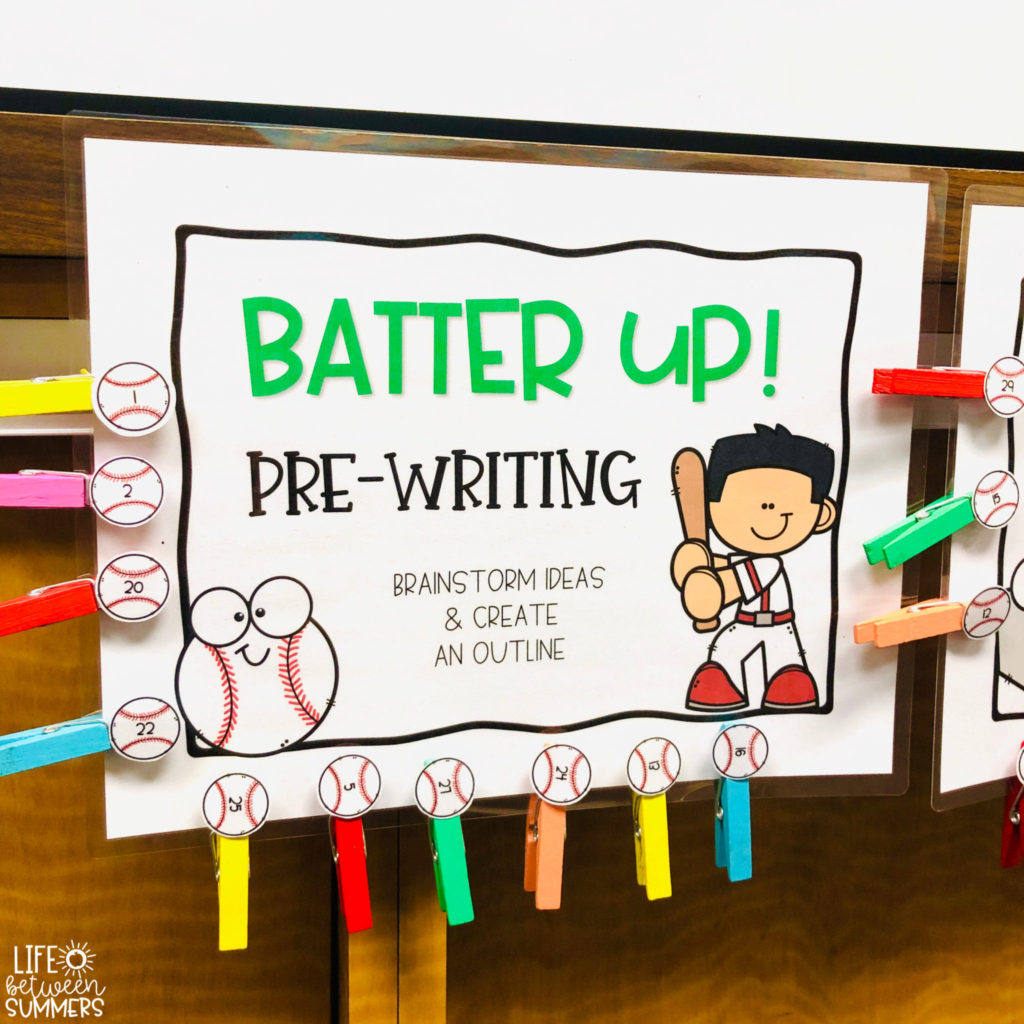
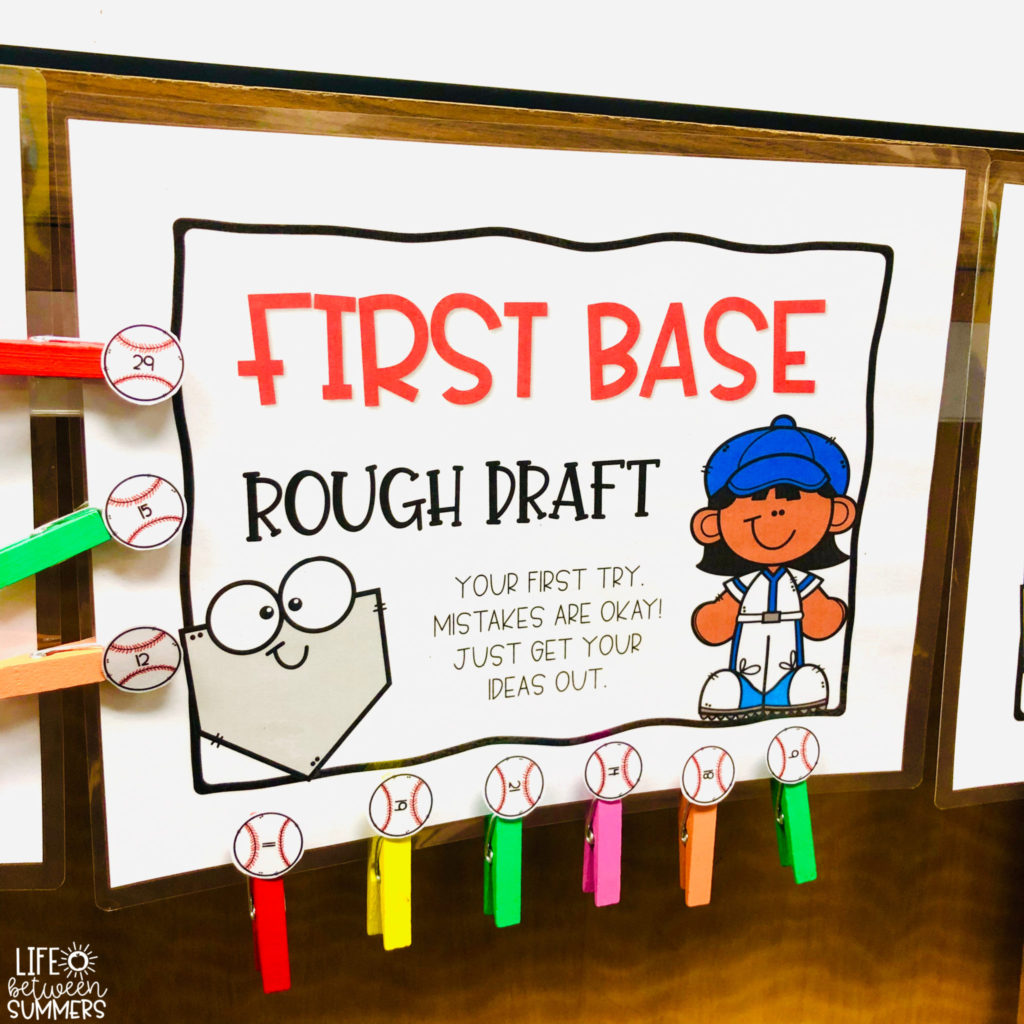
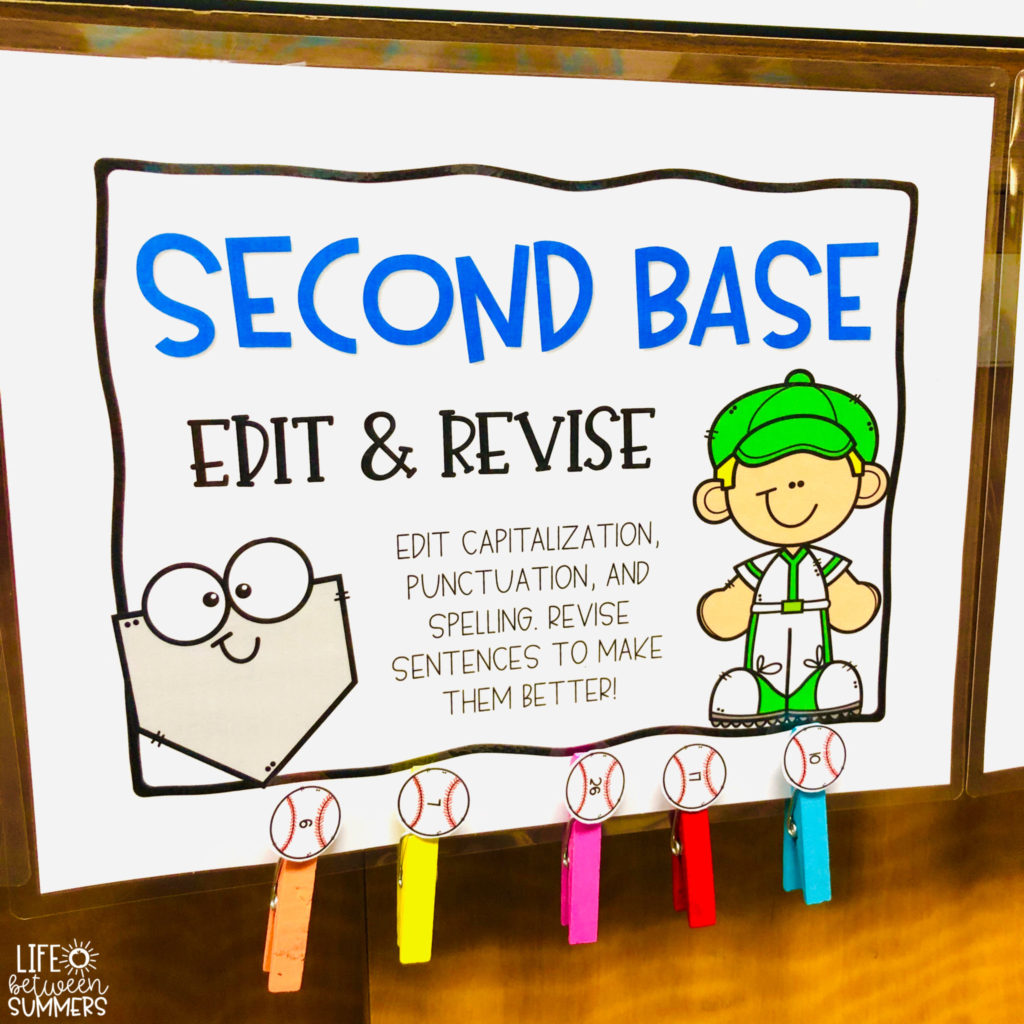

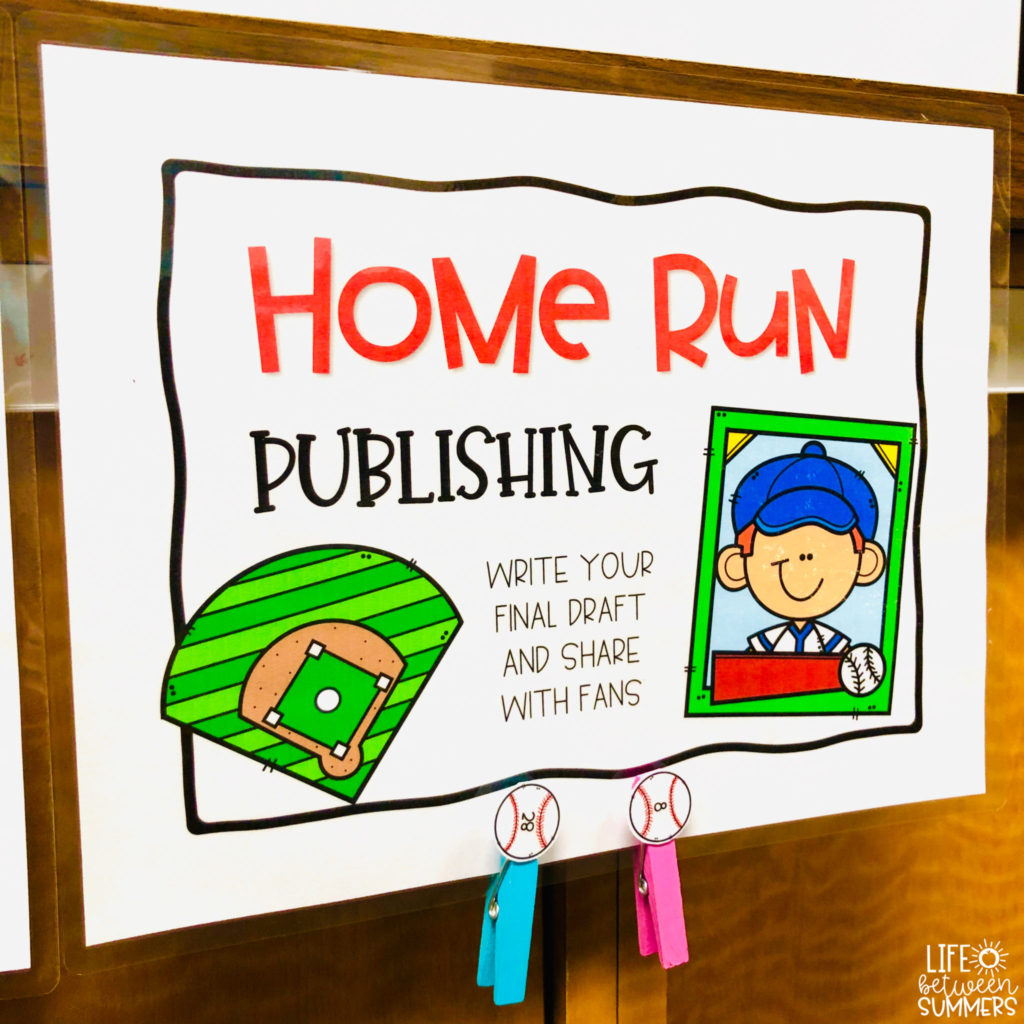
Tell the kids that each time they complete one step of the writing process, they get to celebrate their accomplishment by moving their ball (clothespin) to the next base. I love seeing how proud and excited they are just by the simple little act of getting to go up and move their ball forward. It’s also a nice mini brain break for them to get up out of their seat for a moment after all the hard work they’ve just completed.
You can choose to give your own little prizes or incentives as they move through each step, or opt to just let them have the intrinsic “feel good” sense of accomplishment as they complete each one. I personally do the latter, and it has been motivation enough! I will sometimes add in extra little celebrations, such as having the kids do “the wave” or a fireworks cheer when the entire class has moved their ball to Home Run. On days when the kids have been working extra hard, I’ve also had us do a “Seventh Inning Stretch” where we all stand up and sing “Take Me Out to the Ball Game” with hand motions.
It’s also important to mention that I always tell kids that the writing process is not a race, and that just because someone moves through the bases more quickly than someone else, it does not mean they are a better writer. All writers work at different paces, and fastest does not always mean best. Good writers are focused and should keep trying to progress to each step, but they also take their time and do their best work. Using the baseball theme, you could tell your class that all of them are a team, and can be supportive of each other during “practice.”
Hit a Double: Editing and Revising
Let’s go into a little more detail about Second Base, which is the editing and revising phase. A big goal of mine is for students to learn how to self-edit rather than have the teacher edit everything for them. I tell the kids that an important quality of a good writer is someone who can find their own mistakes and think about ways to make their sentences better.
To help the kids work toward this goal, I teach them how to use editing and revising checklists for informative, opinion, and narrative writing. I introduce a new checklist at different points throughout the year each time we focus on a new writing genre. I would suggest doing a lot of modeling and whole group practice with these checklists before having students use them independently.
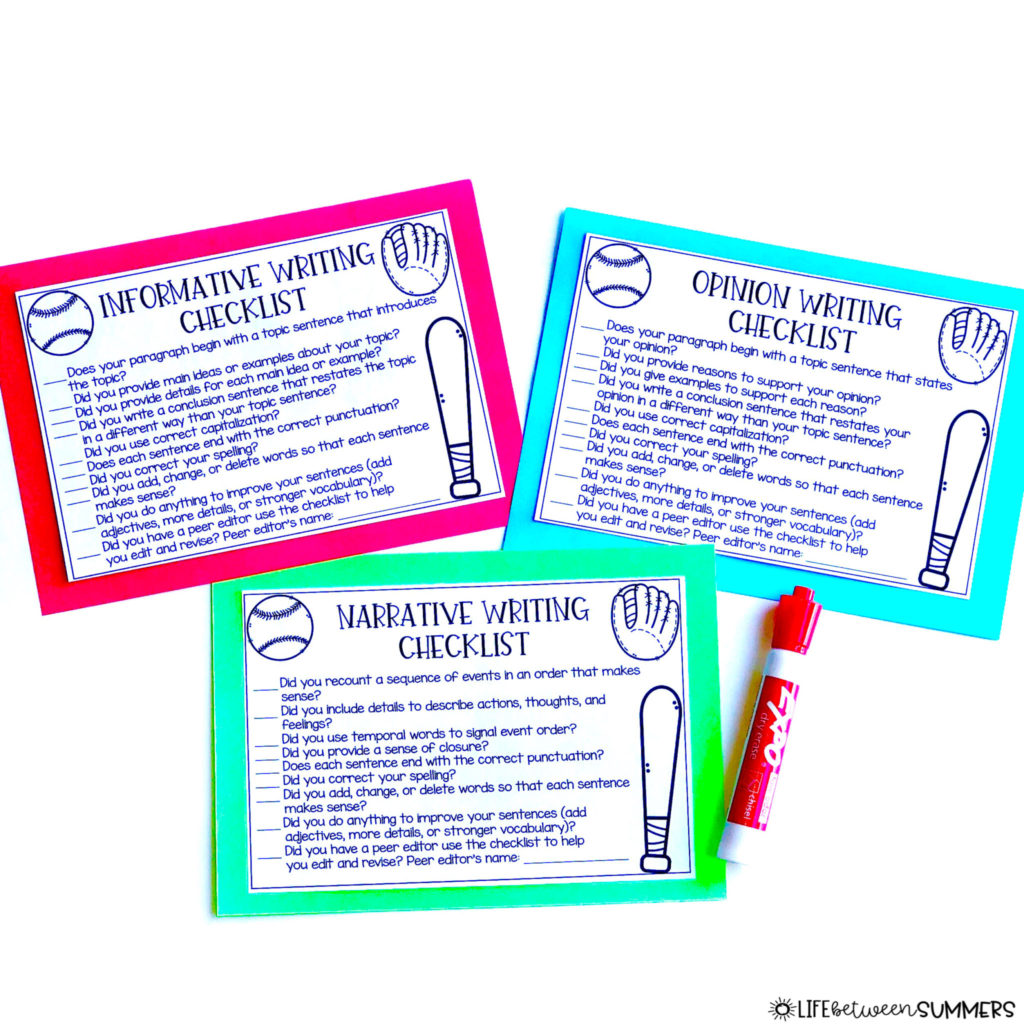
Students go through each item on the checklist one at a time. If their rough draft already contains what one of the items says, they get to check it off using a white board marker (the checklists are laminated so that they can be reused).
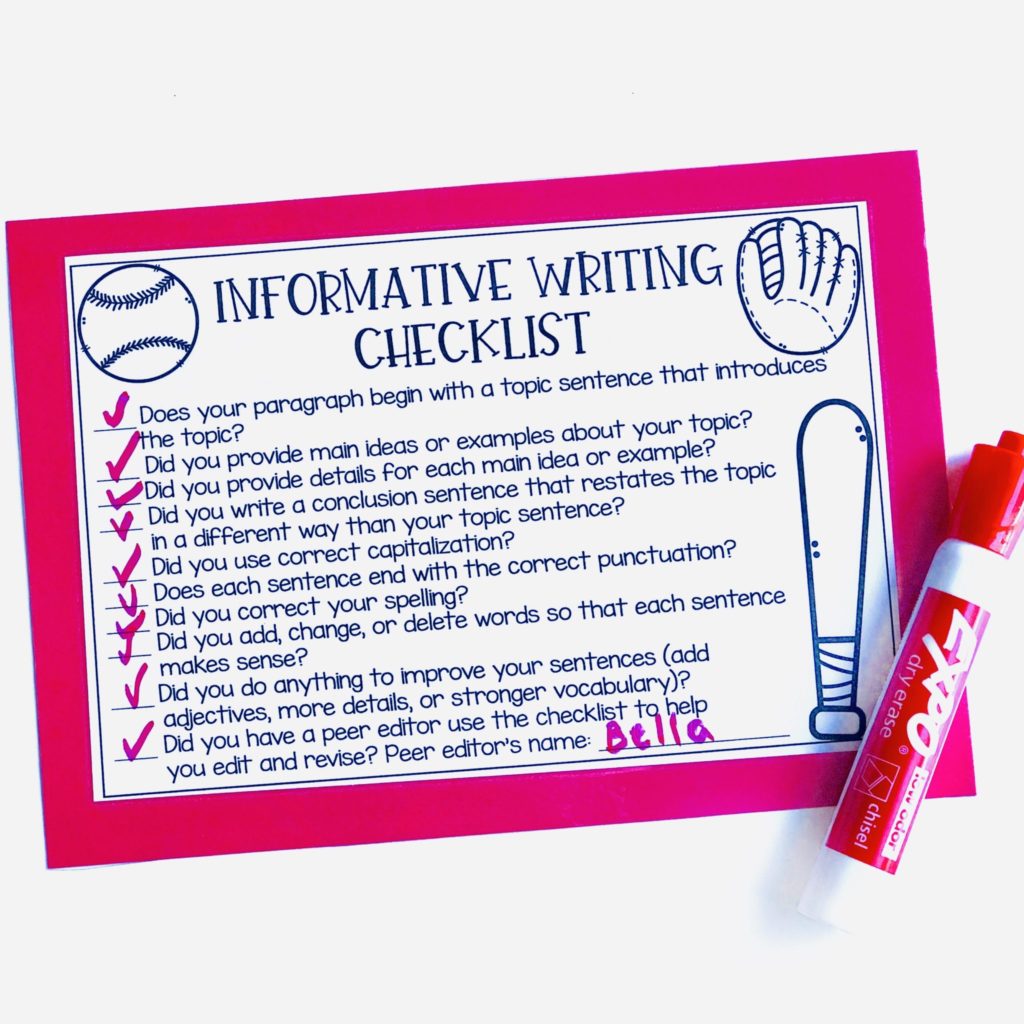
If their writing does not meet one of the requirements yet (for example, if sentences are missing capitals), they have to go back and make those corrections on their rough draft using a ballpoint pen. They must do this before they can check it off with marker on their checklist.
To help with making corrections on their rough draft, I teach my class how to use specific editing marks:
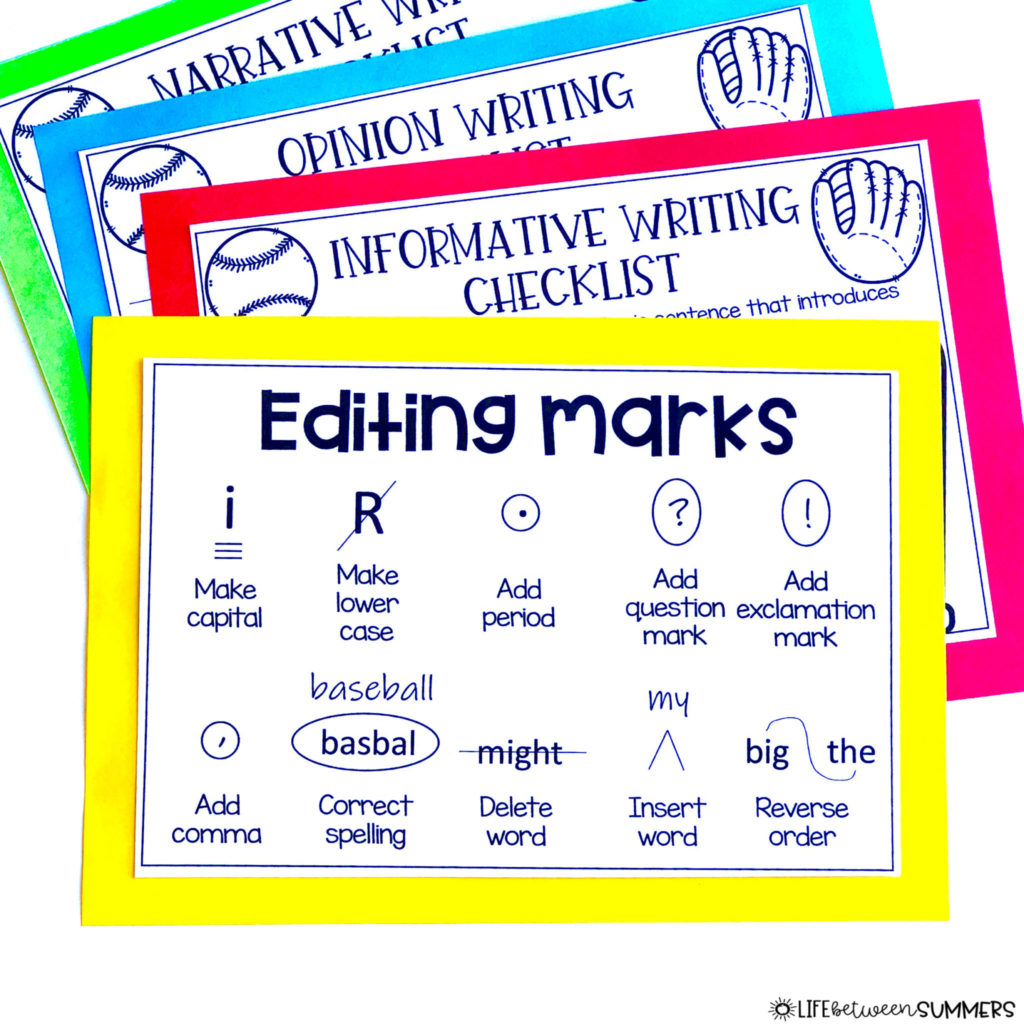
This visual reference is kept in their writing folders, and they take it out with their checklist whenever they are on second base.
You might have noticed that the very last step on the checklist is to peer edit with a partner. I make it a clear expectation that students must do all other items on the checklist on their own first, and that this is the LAST step. Otherwise, I’ve noticed that they are prone to skip ahead straight to peer editing because they enjoy it so much.
A peer editor’s job is to edit that student’s paper using another copy of the same checklist to see if there’s anything their partner might have missed. I have students who are peer editing find a spot on the carpet to sit so I can tell who is specifically working on that (and not just chatting at their table instead of focusing on their writing).
After a student has self-edited and been peer edited, they can move to Third Base and are ready for “Coaching” (a writing conference with the teacher). Ideally, there are less mistakes to find and less sentences for me to help revise since they have already edited on their own beforehand.
After writing is published and students are ready to produce a new piece of writing, simply move all of the clothespins back to Batter Up, and “play again!”
I’m ready, Coach!
Everything you need to implement this in your own classroom is available right here in my shop, or you can also grab it in my TpT store. The bases and checklists are editable in case you need to customize them to meet the needs of your own class or grade level. The baseballs for the clothespins come with student numbers (to be able to reuse each year with new classes), and there is also a blank set of baseballs for anyone who would like to personalize them with student names.
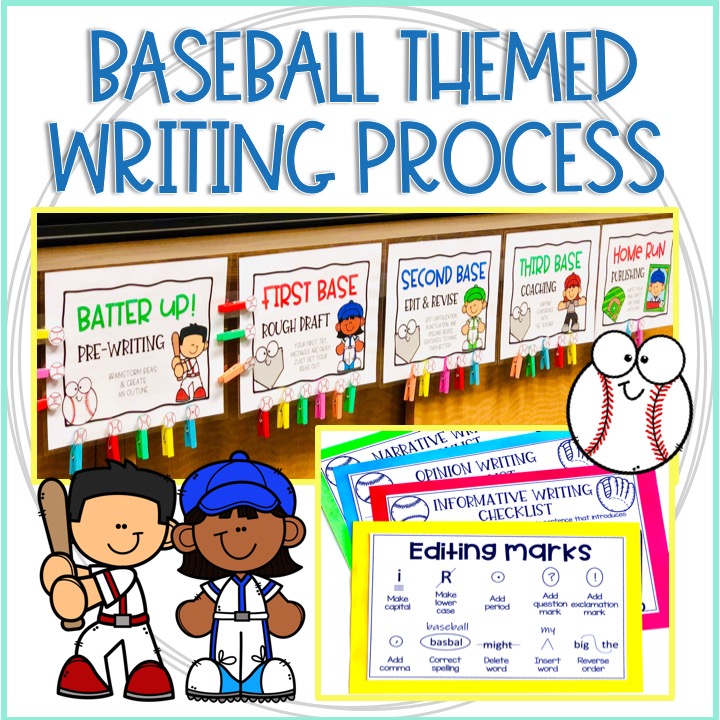
Annnnd, that’s the game! I’ll be right here cheering for you.


Leave a Reply
You must be logged in to post a comment.